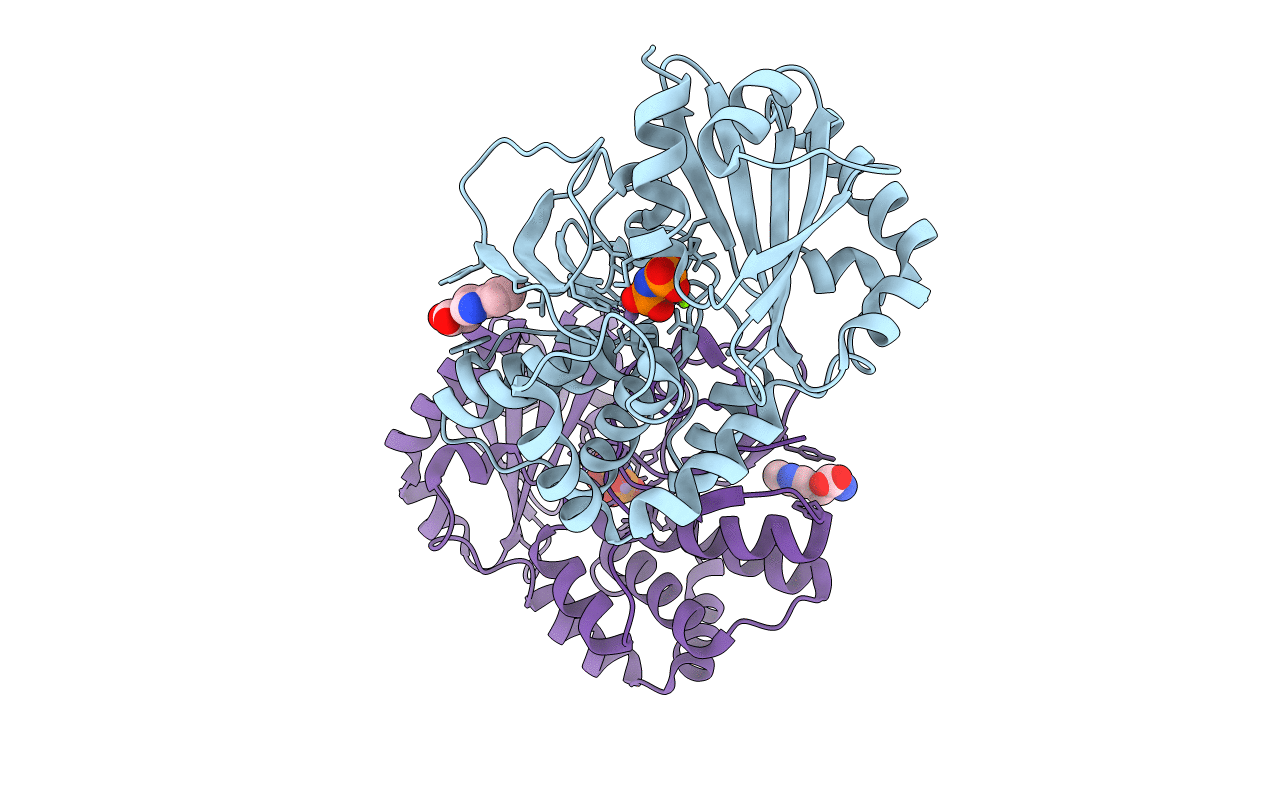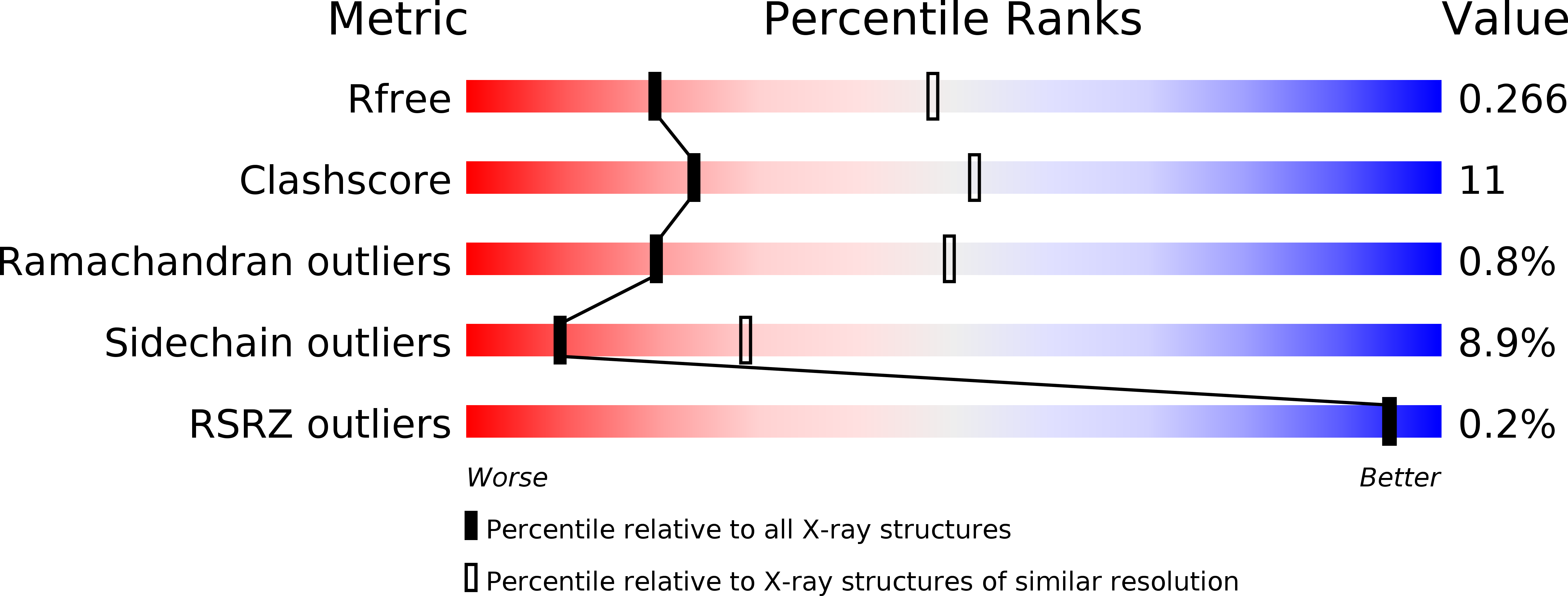
Deposition Date
2007-03-28
Release Date
2007-05-29
Last Version Date
2023-10-25
Entry Detail
PDB ID:
2ENX
Keywords:
Title:
Structure of the family II inorganic pyrophosphatase from Streptococcus agalactiae at 2.8 resolution
Biological Source:
Source Organism:
Streptococcus agalactiae (Taxon ID: 205921)
Host Organism:
Method Details:
Experimental Method:
Resolution:
2.80 Å
R-Value Free:
0.26
R-Value Work:
0.19
R-Value Observed:
0.19
Space Group:
H 3 2


